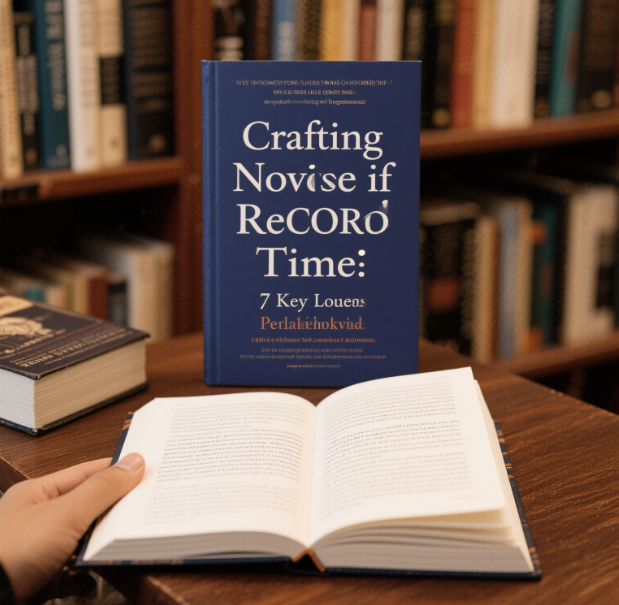In September 2024, I embarked on an audacious writing challenge: to draft a novel in just 30 days. Against the odds, I completed an 85,000 – word first draft of a science – fiction novel in 26 days, a feat that left me both surprised and satisfied. While there’s still a long road ahead to polish it for publication, this experiment was a treasure trove of insights. Here are the seven invaluable lessons I learned along the way.
1. It’s Attainable
At the outset, the idea of writing 5,000 words on weekdays and 1,250 words on weekends for several weeks seemed daunting. Having never written more than 2,500 words in a single day, this was a significant leap. It was like going from running short distances to suddenly attempting a half – marathon. But I managed to cross the finish line! Now that I know I’m capable of this pace, I have no excuse not to aim for similar feats in the future. However, I soon realized that 5,000 words a day was a bit too much, which led me to my second lesson.
2. Sustainability is a Work in Progress
By the end of the 26 – day sprint, I was completely exhausted. I needed an entire week off from writing and even from most work – related activities. The mental and psychological toll was so great that I required a deep recovery. If I had to write 150,000 or 200,000 words at the same speed, I doubt I would have made it. But this experience also revealed that my sustainable writing ceiling was higher than I thought. Writing 5,000 words a day sounds arduous, but 3,500 words now seems manageable, especially with a solid outline. Just a few years ago, I struggled to write 1,500 – 2,000 words a day, and now I’m looking at 3,500. Who knows, in a year or two, 5,000 might feel as easy as 2,000 does today.
3. Nurturing Creative Endurance
I’ve always been in awe of ultramarathoners who train rigorously, often running over 100 miles a week. Their dedication shows that with proper training, the human body can achieve remarkable feats. The same principle applies to creative work. We often limit ourselves, believing we can only do a few hours of deep work a day. But what if this is just the starting point, like thinking a marathon is the limit of our running ability? Creative endurance can be trained, and we may be capable of much more than we think.
4. The Mind – Body Connection in Writing
One of the most unexpected aspects of this intense writing challenge was the physical impact. My skin became dry, my resting heart rate and heart rate variability increased, and I needed up to nine hours of sleep on many nights. It was clear that this wasn’t just a mental drain; it took a physical toll as well. Conversely, I believe that being in good physical shape can enhance our mental work capacity and make it more sustainable.
5. The Blueprint for Success
A detailed outline was the cornerstone of my success. Without it, there’s no way I could have maintained the writing pace. In the past, when I wrote at a more leisurely pace, I often outlined as I went, which led to plot holes and long periods of writer’s block. Having a structured outline meant I always knew what came next, making it easier to keep going. Even for those who prefer the “discovery writing” approach, investing time in an outline can make a world of difference. As Brandon Sanderson once said, “Everyone is an outline writer, some people just need to write a draft to figure out their outline.” I couldn’t agree more.
6. The Power of Focus
I initially feared that writing at such a breakneck speed would leave no room for my subconscious to generate ideas. But the opposite happened. With my entire focus on the novel, my subconscious had nothing else to occupy it. As a result, all the ideas and insights that emerged were directly related to the draft. There were no distractions from other projects or hobbies, and the quality and quantity of ideas increased significantly.
7. A New Writing Strategy
Despite the challenges, this was the best first draft I’ve ever written. The speed of the process actually had unexpected benefits. After having to discard a previous first draft, I now believe it’s better to quickly get a first draft down to see if the story is worth further investment. If you can draft a book in a month, you could potentially complete multiple drafts in a year, select the best one, and still publish a book annually. This has given me a new perspective on how prolific authors like James Patterson manage to produce so much work. While the process may need some adjustments, I’m excited to use this strategy for future projects, including my next non – fiction book.
Now, after giving the manuscript a week’s rest, I’m ready to pick it back up. My next steps are to get feedback from trusted readers in the coming weeks and then prepare it for my agent and potential publishers by the end of the year. The journey continues, and I’m eager to see where this new approach to writing takes me.




